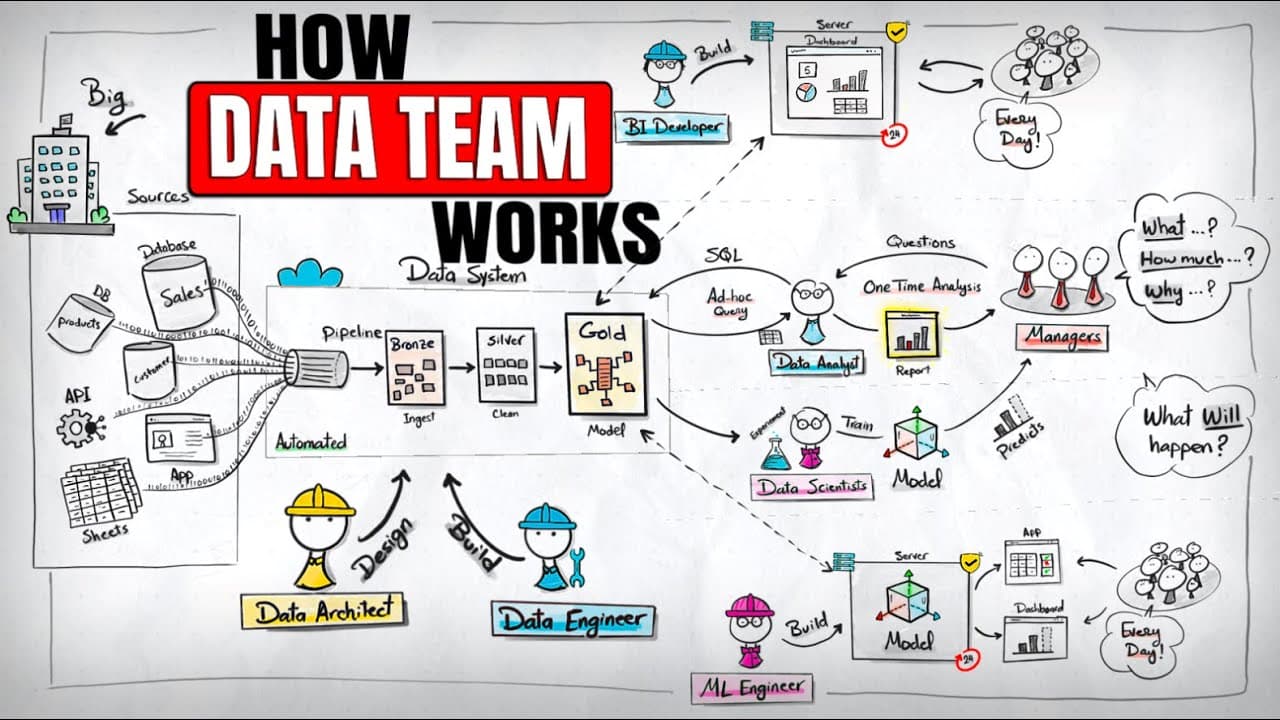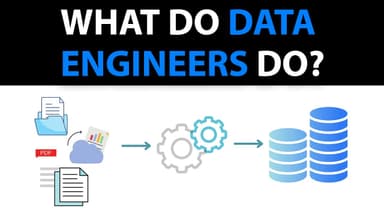Discovering the World of Data Analysis
I never realized how crucial data could be until I started exploring its role in business decisions, acting as a vital bridge between raw information and smart choices that shape company success.
This story reveals the evolution from simple guesses to data-driven strategies, highlighting the challenges and triumphs that come with building effective data teams.
TL;DR
I began as a data analyst, bridging raw data to business questions and uncovering insights that turn guesses into confident decisions.
Facing challenges in big companies, I learned how scattered data leads to delays, pushing for scalable systems to speed up answers.
With data architects and engineers, we designed automated pipelines, transforming messy data into organized layers for quick access.
Reports evolved into interactive dashboards, allowing real-time insights for users and freeing analysts from repetitive tasks.
Finally, data scientists and ML engineers predicted future trends, helping managers stay ahead and make proactive moves.
As a data analyst, I see myself as the essential link between raw data and real business decisions. I answer critical questions like which regions are underperforming or why profits are dropping, using data to replace guesswork with facts. There's a famous quote I often think about from William Deming: without data, you're just another person with an opinion, which highlights how relying on gut feelings can lead to confusion, wasted resources, and poor choices.

In companies, data is everywhere—in databases, spreadsheets, and APIs—but managers lack the time or skills to sift through it all. That's where I step in, like a detective gathering and cleaning data from various sources, then organizing it in tools like Excel for analysis. Once the data is ready, I transform it into visual reports and insights, presenting them to stakeholders as a compelling story that supports smarter decisions.
The skills I need include querying databases with SQL, mastering spreadsheets for cleaning and calculations, and using tools like PowerBI or Tableau for visualizations. Good communication is key too, as I must clearly understand business questions and convey findings effectively. However, this manual approach works for small companies but not for larger ones, where vast amounts of data make it impractical and time-consuming.

To scale, we introduce roles like the data architect, who designs layered systems such as the medallion architecture with bronze, silver, and gold layers for raw, cleaned, and optimized data. Data engineers then build automated pipelines that move and process data quickly from sources to these layers, making it efficient and reliable. This setup eases my workload as an analyst, allowing me to query prepared data models swiftly and focus on generating insights.
Yet, even this has limitations; ad hoc reports can become repetitive, leading to the need for BI developers. They create interactive dashboards on secure servers, automating report generation and ensuring data refreshes daily for multiple users. This automation keeps everything accessible and scalable, shifting my role from manual reporting to strategic analysis.
When businesses look to the future, asking questions like what might happen next month, data scientists step in to build and train predictive models through experiments. Machine learning engineers then deploy these models into production environments, making predictions available via applications or dashboards. This collaboration ensures managers can proactively address challenges, staying ahead of competition.

Overall, a modern data team follows a clear pattern: designers like architects and analysts create blueprints, while engineers build and scale them. This structure allows data to flow seamlessly from sources to insights and predictions, fostering innovation and efficiency.
Reflecting on this journey, I've seen how evolving data roles not only solve immediate problems but also pave the way for forward-thinking strategies that keep businesses competitive and resilient.
Key Takeaways
Data analysts bridge raw data and business decisions, using tools like SQL and Excel to provide actionable insights.
Scalable systems, designed by architects and built by engineers, automate data processes for efficiency in large organizations.
BI developers turn reports into interactive dashboards, making insights accessible and automated for wider use.
Data scientists and ML engineers enable future predictions, helping managers make proactive decisions based on models.











